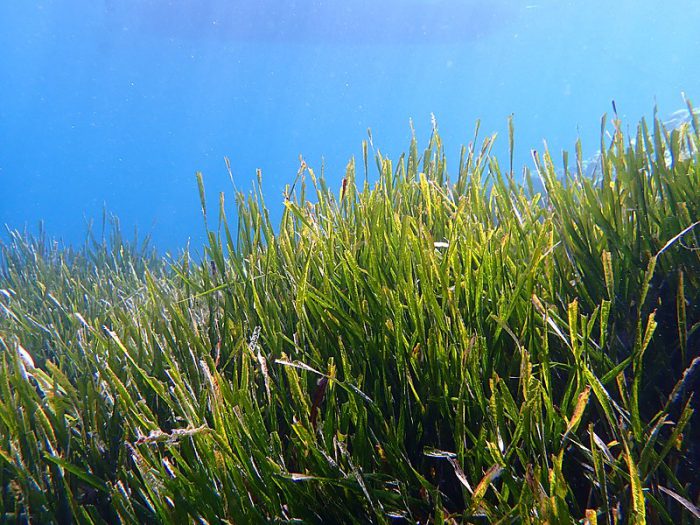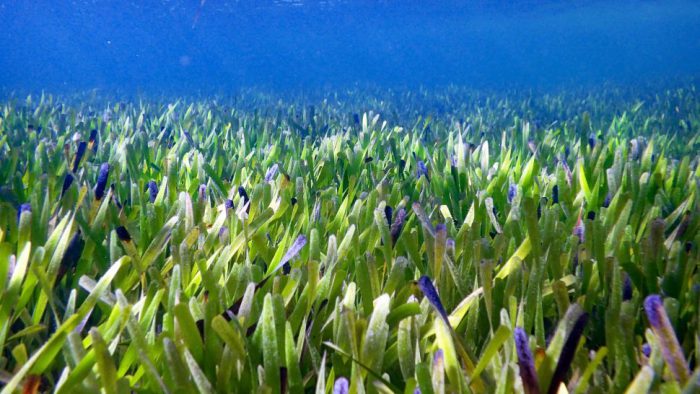When we think of green stuff in the sea, we immediately think of algae.
But what about seagrass? Seagrasses are plants, similar to land-based plants. Their root systems stretch across huge areas, sprouting thousands of leaves and filling shallow seas with rich oxygen. And when we say huge areas, we really mean it!
A recent study of Shark Bay off the coast of Western Australia has found that essentially all of the ribbon weed seagrasses covering the seafloor is genetically identical. In other words, it is all clones of the same original plant. This makes it largest cloned living thing in the world.
Known as Posidonia australis, this patch of ribbon weed is about 200 square km (77 sq. miles) in size!
What is cloning?
Clonal reproduction—or cloning—is a method of making offspring. It is different to sexual reproduction, where elements from one living thing is combined with parts of another of the same species to grow into similar new living things of that species. They are a 50/50 blend of each parent organism.
A clone isn't just similar—it is essentially an exact copy of a living thing. Also known as asexual production, a clone is built up from a copy of a single cell within the parent organism. It is 100 percent of the parent.
Cloning occurs naturally in many single-celled organisms, such as bacteria. But also happens in some plants. Like this ribbon weed!
Stupendous seagrass
An example of a Posidonia genus seagrass, or ribbon weed. (Getty Embed)
When seagrasses use clonal reproduction, they clone themselves by expanding their root systems over a wide area. This creates a network of connected meadows that appear to many similar plants, but is actually one plant. A plant that, in this case, has been copying itself over and over for thousands of years!
Researchers estimate that the ribbon weed in Shark Bay is about 4,500 years old. And it could continue growing indefinitely. That makes it almost immortal!
But while it is not the oldest seagrass meadow on Earth (a patch in Mediterranean Sea is apparently 200,000 years old!), it is the largest. The largest cloned organism on the planet!
Usually flowers, but not this time

Part of another famous patch of ribbon weed, Posidonia oceanica. You can read more about it in this month's issue of OWL! (Wikimedia Commons)
Another interesting fact about seagrasses? They are actually the only flowering plants in the ocean. Flowers are used in pollination, which is a type of sexual reproduction in plants.
Many seagrasses—including ribbon weed—use pollination to make new plants, because it creates stronger offspring. That 50/50 blending of genetic information creates a greater resistance to things like disease and other issues than just copying a single thing over and over.
But amazingly, this particular patch has focused on cloning. And very successfully, too. Grow on, you beautiful city-sized meadow!
If you enjoyed this, be sure to check out the June issue of OWL for a big, beautiful feature of seagrasses, including facts about the oldest known organism on Earth. The issue is out now!
 Part of the world's largest cloned organism in Shark Bay, Australia. (Rachel Austin, University of Western Australia)
Part of the world's largest cloned organism in Shark Bay, Australia. (Rachel Austin, University of Western Australia)









